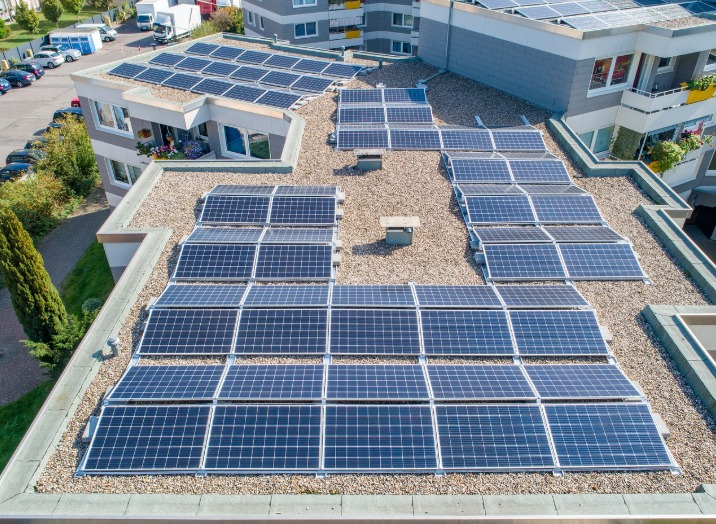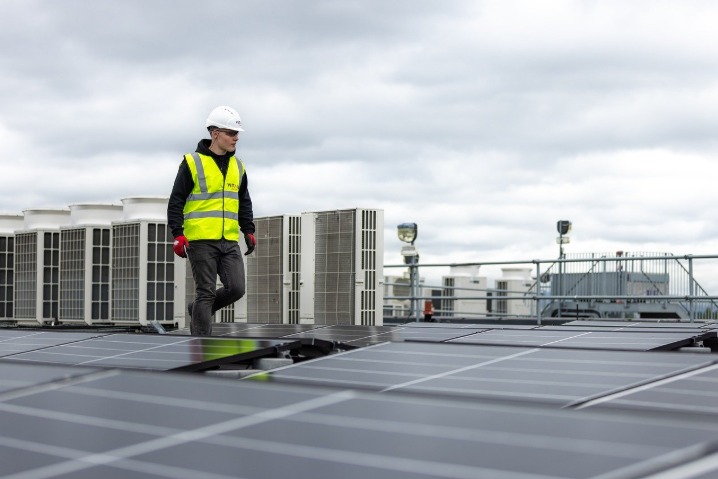
Why Now is the Perfect Time to Make the Transition:
As the world rapidly moves toward a more sustainable future, technological advancements are transforming the energy landscape. Solar power is no longer just an alternative but a central component of how we produce and consume energy. Divvy Solar helps cut costs and emphasise environmental responsibility, so transitioning to solar energy is now a strategic and forward-thinking decision. Adopting solar power means securing financial stability and contributing to a cleaner and more sustainable future. The shift is no longer just an option—it has become more essential.
Let’s take a look at some of the key reasons that make solar power the future of energy.

What is solar power?
Solar energy harnesses the sun’s radiation and converts it into heat or electricity. Solar energy is typically captured through two methods: photovoltaic (PV), which directly converts sunlight into electricity, while concentrated solar power(CSP) uses focused sunlight to generate heat and electricity. Solar energy is renewable, sustainable, and reduces greenhouse gas emissions compared to fossil fuels. The advantages of solar energy include environmental benefits, while facing challenges like intermittency and high initial cost, advancements in storage and efficiency continue to improve.
The Economic Case:.
Solar energy makes a compelling economic case that is hard to ignore and is becoming an attractive economic choice for individuals, businesses, and governments worldwide. This economic shift dramatically decreases solar panel prices, government incentives, and subsidies. Over the decade, solar technology has continued to evolve, and the financial cases of solar have become even stronger

Significant Cost Reductions:
One of the most visible changes in the solar industry is that the cost of solar technology has plummeted in recent years. In 2024 alone, solar component prices fell by 35%. Additionally, the incentives available to homeowners and businesses make the transition to solar power even more affordable. As installation costs decrease, the return on investment becomes attractive, and policies play a crucial role in accelerating the switch to clean energy.
Energy Independence and Security:
The Indian solar energy market is rapidly expanding and achieving energy independence by offering security and stability, valued at USD 10.3 billion in 2024 and projected to grow to USD 50.4 billion by 2031, growing at a CAGR of 21.9%. And some estimates suggest even more significant growth; the market could reach USD1,254 billion by 2033.
Solar contributes to energy independence and security by allowing grid stability, reducing fossil fuel consumption, and enhancing resilience. Government incentives such as the National Solar Mission and the PM Surya Ghar: Muft Bijali Yojana offer 40% of installation costs for residential rooftop solar, making solar energy more accessible; however, the combination of market growth and government support positions as a foundation of India’s energy independence and security strategy.
A Sustainable Long-Term Investment:
Solar power provides a compilation of long-term financial savings, unlike traditional energy sources. Beyond cutting monthly bills, lowering your long-term expenses offers a predictable and stable cost structure. Furthermore, an energy-efficient property value is significantly higher, making it more attractive to investors for real estate investment. Investing in solar contributes to a resilient, decentralised energy infrastructure, insulating communities from grid disruptions. In India, this makes embracing solar power a forward-thinking investment for residents and business owners.
Technological Advancement:
The rapid evolution of solar energy promises to offer enhanced energy efficiency, affordability, and versatility. As we move forward towards 2025, several key innovations will revolutionise solar power, and these developments will empower a cleaner, sustainable future.

Significant Technological Advancements in Solar Energy:
The solar energy industry has witnessed remarkable technological growth and innovation in photovoltaic (PV) panel efficiency, and smart grid integration has significantly improved the reliability and scalability of solar systems. As research and development continue to drive innovation, the future of solar looks promising, and solar energy is poised to play a pivotal role in the global transition toward a sustainable and resilient energy future.
Key Innovations:
Community Solar: Shared access, crediting utility bills for energy output.
Perovskite Solar Cells: Cheaper, thinner, flexible, and more efficient; researchers aim to improve stability.
Bifacial Panels: Capture sunlight on both sides for maximum energy in limited spaces.
AI Optimisation: Algorithms analyse data to maximise energy output.
Smart Inverters: Enhance energy management and storage integration.
Solid-State Batteries: Safer, longer-lasting, and higher energy density.
Vanadium Flow Batteries: Grid-scale storage for high solar generation periods.
Rising Demand for Clean Energy:
The global demand for clean energy is on the rise due to environmental concerns, climate change, and energy security needs, and as we move towards carbon neutrality, challenges of depleting fossil fuel reserves and rising energy costs, solar will shape a sustainable and economically viable landscape. Governments and organisations worldwide are intensifying carbon emission reduction efforts through stricter regulations and clean energy investments. These initiatives, technological advancements, and cost reductions have positioned solar energy as the leading alternative to traditional fossil fuels, and the IEA projects solar PV will contribute to global electricity growth.

Environmental Benefits:
Solar energy is a significant advantage in reducing air pollution, as it reduces the use of coal, oil, and natural gas, which release pollutants such as carbon dioxide (CO₂), sulfur dioxide (SO₂), and nitrogen oxides (NOx), and solar power generates clean energy without compromising air quality. According to a 2023 Air Quality Life Index report, reducing global PM2.5 air pollution to meet WHO guidelines would add 2.3 years to the average human life expectancy.
The Undeniable Environmental Benefits of Solar Energy
Traditional power generation often requires large amounts of water for cooling; however, PV systems require minimal water, and non-renewable sources may rely on water, which can have a significant impact on the ecosystem. Solar power diminishes the greenhouse effect responsible for global warming, and every 1,000 kWh of energy harvested from solar radiation reduces carbon dioxide emissions by about 812 kilograms per year. The lifecycle emissions per kWh of electricity produced by rooftop solar are around 12 times less than those of natural gas and 20 times less than coal. Furthermore, as more homeowners, businesses, and industries transition to solar power, the demand for fossil fuels naturally declines, ultimately enhancing energy security and economic stability.

Why Now?.
As we enter 2025, this is the ideal time to adopt solar power because it is more accessible and affordable than ever, and solar energy stands out in addressing the critical challenges of climate change. Solar energy plays a vital role in the global energy landscape with cutting-edge technology. As more homeowners, businesses, and policymakers recognise the benefits of solar power, the time to act is now. It is the practical solution for ensuring that future generations inherit a world capable of sustaining their needs. Join us in making this transition at Divvy Solar Solutions to embrace renewable energy for a sustainable tomorrow.
